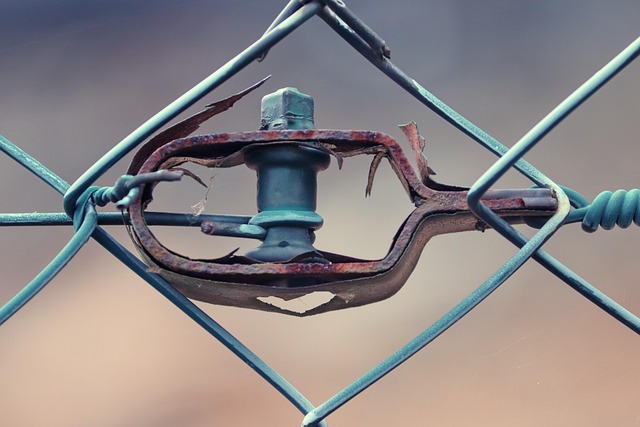Fencing large properties doesn’t have to break the bank. This article explores cost-effective solutions for safeguarding your expansive spaces while managing budget constraints. From understanding specific fencing needs for large areas to creative design options and low-maintenance choices, we guide you through every step. Learn about budget-friendly materials like wood versus vinyl, installation tips ensuring longevity, local regulations, and permits, making your fencing project both economical and compliant.
- Understanding Fencing Needs for Large Properties
- Budget-Friendly Materials: Wood vs. Vinyl
- Creative Design Options for Cost Efficiency
- Installation Tips for Longevity and Savings
- Low-Maintenance Choices for Easy Ownership
- Local Regulations: Permits and Compliance
Understanding Fencing Needs for Large Properties
Large properties come with unique fencing challenges. The extensive perimeter often requires robust, durable materials to withstand potential intruders or wildlife. Additionally, aesthetics play a significant role; homeowners desire fences that complement their property’s natural beauty and overall design.
These properties may also have specialized needs, such as secure perimeters for livestock, privacy considerations for residential areas, or functional barriers for recreational spaces. Understanding these multifaceted requirements is essential in selecting the right fencing solution, ensuring both effectiveness and visual appeal.
Budget-Friendly Materials: Wood vs. Vinyl
When considering cost-effective fencing solutions for large properties, the choice of materials plays a significant role in managing expenses. Two popular options are wood and vinyl, each offering unique advantages and disadvantages in terms of affordability. Wood has long been a traditional fencing material, known for its natural beauty and ability to blend seamlessly with outdoor landscapes. However, it tends to be more expensive than vinyl due to the varying quality and treatment methods required to ensure longevity against elements like rot and pests.
On the other hand, vinyl fencing has gained popularity for its durability and low-maintenance requirements. Vinyl is generally less costly than wood, making it an attractive choice for budget-conscious property owners. While it may lack the natural aesthetic appeal of wood, vinyl offers a wide range of colors and styles to suit different tastes and landscape designs. Its resistance to rot, pests, and extreme weather conditions further contributes to its cost-effectiveness over time.
Creative Design Options for Cost Efficiency
When it comes to cost-effective fencing solutions, creative design options can significantly reduce expenses without compromising aesthetics. One innovative approach is to incorporate natural materials like bamboo or recycled plastic into fence structures. These eco-friendly alternatives are not only budget-friendly but also add a unique visual appeal to your property. By opting for custom designs that play with these materials’ natural textures and patterns, you can create visually stunning fences that stand out while maintaining affordability.
Moreover, modular fencing systems offer both flexibility and cost savings. These pre-fabricated panels can be easily assembled, disassembled, and rearranged, allowing you to adapt your fence layout as needed. This versatility enables property owners to design unique configurations, incorporate artistic elements, or even create multi-functional spaces by combining fences with gates, arbors, or pergolas. Such creative approaches not only reduce construction costs but also enhance the overall value and uniqueness of your large property.
Installation Tips for Longevity and Savings
When installing fencing for large properties, there are several tips to ensure longevity and maximize cost savings. One key practice is to plan the layout carefully before beginning construction. This includes considering the terrain, existing vegetation, and any potential obstructions. A well-thought-out design can minimize material waste and reduce labor costs.
Additionally, using durable materials suitable for outdoor conditions is essential. Opting for treated wood or vinyl fencing can significantly extend the fence’s life, preventing rot, rust, and pest damage. Regular maintenance, such as cleaning, sealing, and repainting, also plays a crucial role in preserving the fence’s condition. This simple step can prevent premature replacement and further save costs in the long run.
Low-Maintenance Choices for Easy Ownership
For those seeking a hassle-free fencing option, low-maintenance choices offer a breath of fresh air. Materials such as vinyl and composite are designed to withstand various weather conditions, eliminating the need for frequent cleaning or repairs. These durable options not only reduce time spent on upkeep but also provide a long-lasting barrier that can enhance property value.
Additionally, many low-maintenance fences come in a variety of styles and colors, allowing homeowners to customize their outdoor spaces while enjoying the benefits of reduced maintenance. This means you can have a beautiful, secure fence without the constant worry and effort traditionally associated with fencing ownership.
Local Regulations: Permits and Compliance
Before installing any fencing on your large property, it’s crucial to understand local regulations regarding permits and compliance. Each municipality has its own set of rules and guidelines that dictate what types of fences are allowed, where they can be placed, and how they must be constructed. Failure to adhere to these regulations can result in fines or even the requirement to remove the fence.
To ensure compliance, start by researching your local zoning laws and building codes. Check with your city or county clerk’s office for specific requirements related to fencing. You may also need to obtain permits from relevant departments, such as planning, building, or public works. Understanding these regulations early in the process can save you time, money, and potential headaches down the line.
